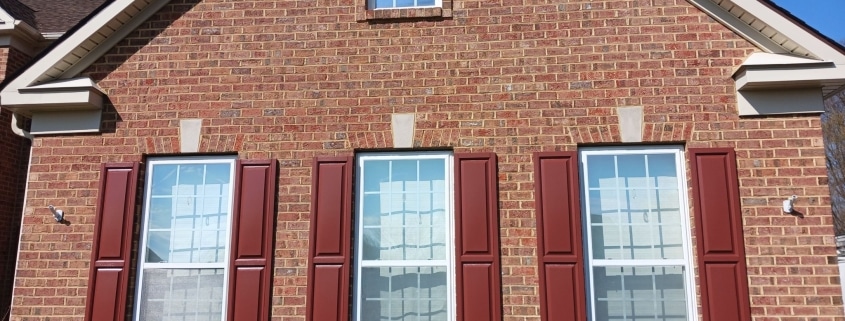Why Some Paint Colors Fade Faster Than Others
When choosing a paint color for your home or business, chances are you’re primarily thinking about how the colors are going to look or the mood they might set. Of course – these are essentials! However, an often overlooked aspect of paint selection is how different colors and qualities of paint endure over time, especially in terms of fading. Understanding why some paint colors fade faster than others is crucial not only for maintaining the appearance of your property but also for ensuring that your investment stands the test of time.
Let’s dig into it more deeply.
The Science of Paint Fading
We all know fading paint when we see it, but what is actually happening and why? Well, without getting into the complex science of photodegradation, oxidation, or any other kind of “dation”, let’s just say paint fading is caused by external factors. And primarily UV light which breaks down the chemical bonds in paint pigments, leading to a loss of color intensity. Kind of like a reverse sunburn. UV rays are absorbed but rather than paint getting darker it gets lighter!
Paint Color and Lightfastness
Lightfastness refers to a pigment’s resistance to fading when exposed to light. Not all colors fade at the same rate due to differences in pigment composition. Generally, reds, blues, and yellows are more susceptible to fading, with red pigments often being the most vulnerable. This is because these colors absorb more light, leading to quicker breakdown and fading. On the other hand, earth tones like browns and beiges have better lightfastness and tend to maintain their color longer.
Interesting, right?
Other Environmental Factors That Contribute to Paint Fading
Environmental exposure can greatly influence the rate at which exterior paint fades. Direct sunlight, as mentioned above, is certainly the major culprit, but there are other factors to take into account:
Reaction with Oxygen: Paint can fade through oxidation, where oxygen in the air reacts with the pigments or the binder in the paint. This reaction alters the chemical structure of the pigments, causing a change in color or a loss of color intensity.
Pollutants: Atmospheric pollutants like sulfur dioxide (SO2) and nitrogen oxides (NOx) can also contribute to paint fading by reacting with the paint components.
Why Good Quality Paint is Worth the Investment
The quality of paint plays a significant role in its longevity and resistance to fading. High-quality paints use more refined pigments and better binders, which help protect the pigment particles from UV light and environmental damage. The type of paint also matters; for instance, acrylic paints are known for their excellent color retention properties, while oil-based paints may offer richer colors but can be prone to quickly fading when exposed to direct sunlight.
What Can You Do About it?
You may be wondering: “is there any way to prevent this?” Of course! While you can’t make anything last forever, proper maintenance can extend the life of your paint dramatically. Regular cleaning to remove dirt and grime, along with periodic touch-ups, are great ways to help maintain color vibrancy.
If you’re thinking about a new paint job altogether here are a few more pro tips:
- When selecting paint consider fade-resistant options
- Have the job done by an experienced professional
- Choose colors based on the orientation of your walls and the local climate
- Consider applying protective overcoats that shield paint from harsh environmental conditions
All of these things can make a significant difference in how well your colors hold up over time. In the end there is no need to worry, just make sure you’ve considered the factors and choose what fits!
Frequently Asked Questions
Q: Can indoor paint colors also fade? Yes, though indoor paint colors generally fade less rapidly than exterior paint due to reduced exposure to sunlight and environmental factors. However, areas receiving ample sunlight through windows can still see noticeable fading over time.
Q: How often should I repaint my home to keep the colors vibrant? The frequency depends on several factors, including paint quality, color choice, and exposure to elements. As a general rule, a well-maintained exterior paint job can last up to 10 years, while interior paint may need refreshing every 7-10 years.
Q: Are there any fade-resistant paints available? Yes, advancements in paint technology have led to the development of paints specifically formulated to resist fading. These products often contain UV inhibitors and higher-quality pigments and binders. Consulting with a painting professional can help you select the best option for your needs.
Q: Does the type of paint finish affect fading? Yes, the finish of the paint can influence its fade resistance. Glossy finishes, for example, tend to resist fading better than matte finishes due to their reflective properties, which deflect some of the UV light.





Leave a Reply
Want to join the discussion?Feel free to contribute!